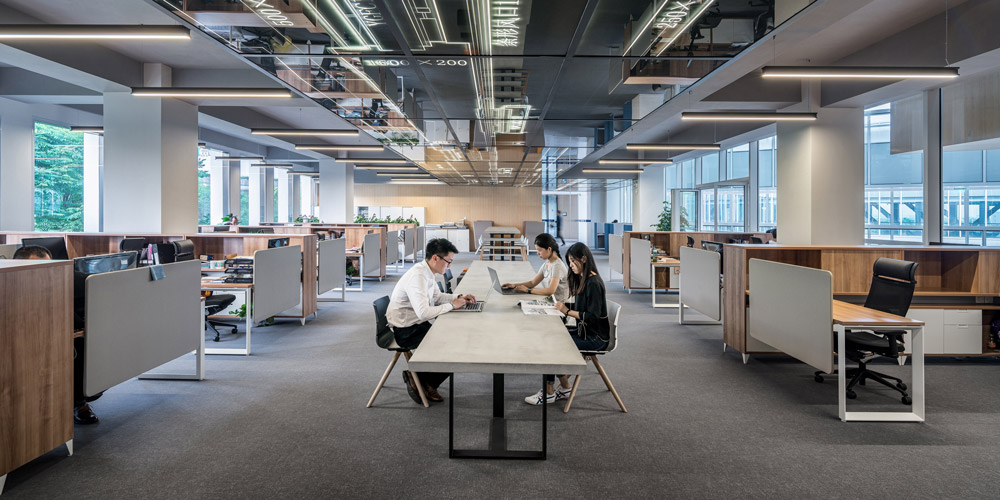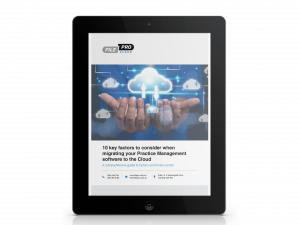Many professional services firms are wrestling with innovations in workplace design, in particular flexible working and activity-based working. While the concept often sounds great, implementation can be more problematic. To make things even more challenging, implementation is often combined with a mandate that employees work flexibly for a minimum number of days per week.
So, let’s take a closer look at flexible working and activity-based working – and how to get the crucial implementation phase right.
Activity based working: the pros and cons
An activity-based working environment is a predominantly open plan office with a number of different work spaces or environments. Employees select the work area best suited to the task at hand.
Research indicates that activity based working, when designed well, is advantageous. There are more opportunities for communication and collaboration, role modelling opportunities for leaders and learning opportunities for young professionals. Also, more workers have the opportunity to take in the natural light and vista. For the organisation, there’s usually cost savings on rent and the office is more easily scalable.
On the other hand, confidentiality issues can crop up and there’s the potential for a reduction in productivity due to noise, interruptions and lack of privacy. Some people find this set up stressful, whether it’s the issue of finding a new desk every day, sitting next to an intimidating partner or just feeling too ‘visible’. It can also exacerbate the age-old problem of strong perfume and food odours.
Flexible working: the pros and cons
Flexible working involves staff working part of their week from a remote location. Often, this is a home office but it can include other places such as co-working spaces, the local café or overseas. It may also include clocking on during non-traditional hours to work around things like school pick ups and drop offs.
Demand for flexible working is on the increase. Notwithstanding this, Yahoo’s CEO famously banned flexible working. Generally, though, it’s a big plus for many to be able to work flexibly around parenting or other caring demands.
Flexible working is often associated with increased productivity due to reduced interruptions and the more relaxed environment. Some tasks, such as writing and editing, are better suited to flexible or remote working. This work innovation also allows greater mobility and facilitates working from a client’s premises or combining work with travel. It also allows people to work when they feel most productive.
Of course, it’s not always suitable. Junior staff may need regular supervision and it can inhibit collaboration and leadership. The lack of social interaction may also be a problem – some people struggle with loneliness while others lose engagement and motivation working solo.
How to get it right
As Parkins Lane Principal, I’ve been involved in effective and award-winning activity based office fit outs. I’ve also experienced flexible working first hand in a virtual law firm.
To get implementation of these innovations right, focus on these six key areas:
1. Activity based workplace design: get the balance right
People have different work patterns and preferences. The key is getting the balance right between spaces that promote collaboration and spaces that enable head-down concentration.
The main type of work areas to create this balance are:
- Pods: 4–6 workstations clustered | Often the areas that these pods occupy are also designated as “quiet areas”.
- Sit/stand desks | Research indicates that sitting desks are unhealthy as the encourage lengthy sedentary behaviour.
- Breakout/community areas | Designed for informal discussion/meetings/collaboration.
- Quiet rooms | Created for focused, detailed work.
- Café (often open) | Creates a social environment where staff bump into one another and hold informal client meetings.
- Meeting rooms | Used for formal meetings.
- Phone booths | Small rooms specifically for private phone calls.
- Benches | For open working.
- The use of sound deadening finishes, white noise and plants are also prevalent.
2. Practices, policies and procedures
These can also significantly improve the productivity of an activity based working space:
- Train staff in the selection of the work space best suited to the task they are undertaking
- Provide lockers for staff to store personal items and limited files
- Sanction the use of headphones
- Designate pods/open plan desk areas as quiet zones and enforce a no talk, no phone policy at desks.
3. Mobile technology
This is critical for both flexible working and activity based working. A move away from static technology to mobile technology (such as laptops, soft phones, wireless connectivity and video conferencing) enables staff to move seamlessly through the different work environments. Staff can move from desk to meeting room to café or work remotely without disruption.
4. Change management
Change management is a must for both of these innovations in workplace design. Best practice includes:
- Creating a steering committee to aid in design decision making
- Designing and implementing a program to ensure all staff are comfortable and on-board with the change
- Encouraging two-way communications between the steering committee and employees
- Retaining a professional in change management.
5. Leadership behaviours
Firms that offer remote or flexible working are seen as fun, progressive and innovative.
There’s a flip side to this picture, though. For remote working to be effective these same firms must exhibit tough, less easy-to like behaviours, such as:
- No tolerance for incompetence | With the freedom of working remotely comes a higher performance standard. Bad work habits and poor management are only exacerbated by remote working.
- Discipline and dealing with underperformance quickly| It is important that workers not in immediate proximity are not “out of sight, out of mind”.
- Candour | Frank and respectful communications are necessary, no matter what the medium.
- Creating opportunities for engagement | Commonly, firms will mandate a day or weekly meeting where all staff are present. Staff in remote locations are expected to video conference in to attend the meeting.
- Individual accountability and self-drive | Remote working isn’t necessarily a right: it needs to make sense in the context of the person’s role and the specific individual must display a high level of individual accountability and self-motivation.
- Strong leadership | Leaders of staff working remotely must clearly communicate priorities and firm direction. They should also enunciate work principles that are not to be compromised by remote working.
6. External assistance
Consulting services available to assist firms in the implementation of change to workplace design include:
- Management consultants, who can help with:
- facilitation and development of the firm’s workplace design strategy, usually with the leadership group
- establishing and chairing the steering committee that oversees the workplace strategy’s implementation
- Workplace design consultants, who can create workplace surveys, heat maps, sign of life studies and top level design concepts
- Architects involved in the actual detailed design based on top level design concepts,
- Change managers to lead change management programs, strategies and communication.
Bringing workplace innovations to life
Good workplace design involves starting at the top and developing a coherent strategy. What outcomes is the firm is seeking to achieve? What are its employees needs given their roles? What elements are non-negotiables? The strategy may, or may not, involve activity based working and flexible working.
And, as we’ve seen above, the “design element” is just one component of many required to make a new workplace design work. Leadership, policies and procedures, information technology and good change management are all vital to make a thoughtful design come to life.
However, the effort can pay off, with properly-implemented workplace design innovations significantly improving productivity and staff engagement in the long term.
About the Author
Rob Patterson is founder and Managing Director of the Parkins Lane Consulting Group.
Rob draws on more than 30+ years of strategy, financial and marketing experience within professional service firms. His experience in implementing growth strategies, and in particular the successful merging and/or acquiring of professional services firms, is unparalleled in Australia.


